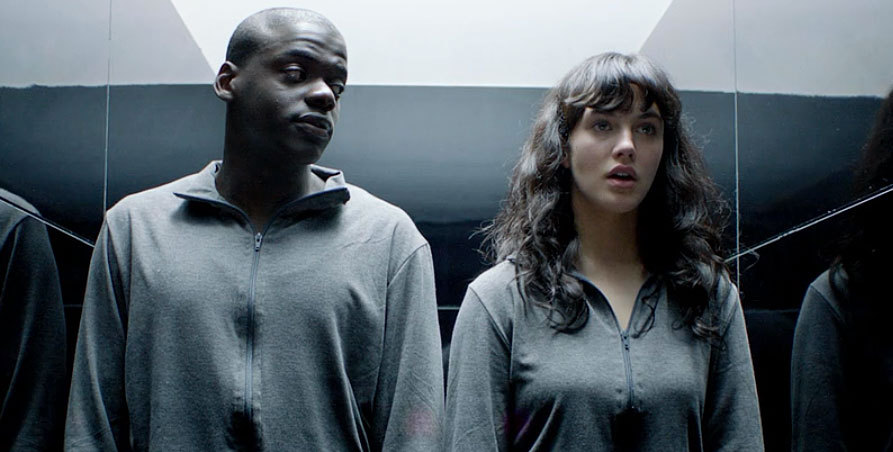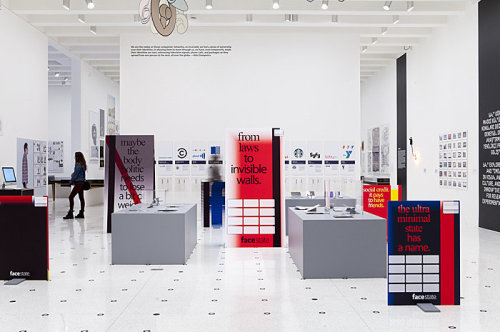Black Mirror and Design fiction

Tomorrow, Netflix will release the first new episodes of Black Mirror, the popular BBC show created by satirist and broadcaster Cory Brooker that debuted in England in 2011. The show made its way to the United States a few years later to wide acclaim, leading the streaming service to purchase the rights and produce a new season. Presented anthology style where every episode is a different story with different actors, the show presents various near-future scenarios about the dark side of technology. There’s an episode where everyone has video chips inserted behind their ears that record all memories and another that uses someone’s social media presences to create an artificial intelligence to revive them after they’ve died. It can be disturbing and hard to watch while also fascinating and engrossing. It is not quite science fiction. There are no aliens or flying cars or time travel. It portrays a world we’re wholly familiar with — YouTube, Facebook, and Downton Abbey show up in episodes — but its been twisted just a bit to give us a glimpse of a possible future. (Or, maybe, a possible present.)
The design critic Rob Walker argues that the show is not about fear of future technologies. It’s not about a world (a future? an alternate reality?) where technology goes wrong and gains too much power, but rather about how people who interact with this technology misuse it. “[Brooker] has called it a show about ‘weak people using powerful tools’,” Walker writes, “I’m pretty sure that by ‘weak people’ he means most of humanity. That narrative approach is precisely what makes the best episodes so unnerving.” When you view the show through this lens, its less about dystopian futures and the abuses of technology and more about our world — here, now — and how we interact with it. Black Mirror is a story about design.
Black Mirror’s commentary on our relationship to technology could fit into the growing fields known as “design fiction”, “speculative design”, and “critical design.” The term speculative design was coined by Anthony Dunne and Fiona Raby, an industrial design duo based in London. For ten years, between 2005 and 2015, Dunne and Raby led the industrial design program at the Royal Academy of the Arts where they “used design to stimulate discussion and debate amongst designers, industry and the public about the social, cultural and ethical implications of existing and emerging technologies.” In 2013, the duo published Speculative Everything: Design, Fiction, and Social Dreaming. Their book presented a manifesto on how the design process can be more than simply the creation of products — it can also be the creation of ideas. Design speculations, they wrote, “act as a catalyst for collectively redefining our relationship to reality.” These terms — design fiction, speculative design, critical design — often used interchangeably, all allow the designer to speculate about a possible future, critique stories about current culture, or use graphic design to narrate fictions about society, politics, technology, and culture.
In 2014, Jon Sueda curated a show in San Francisco called “All Possible Futures” that surveyed recent speculative design work from Experimental Jetset to Ed Fella. The Design Displacement Group is designing for twenty-years in the future to “look back on today, to understand the discourse of graphic design as it is happening today – with different eyes and speculative future categories.” In 2011, the Dutch design-duo Metahaven, founded in 2007 by Vinca Kruk and Daniel van der Velden as a “design and research studio”, were commissioned by Ellen Lupton and Andrew Blauvelt to create an installation for the Walker Art Center show, Graphic Design: Now In Production. Metahaven’s installation, called Facestate, was described as a “research project” about the “parallels between social networks and the state”. They wrote:
It is about politicians hailing the entrepreneurship of Mark Zuckerberg, about the neoliberal dream of minimal government interference, about the governance of social networks, about face recognition, about debt, about the future of money and currency in social networks, and about the dream of total participation. And it is about Facebook as a back door for government surveillance. Some recent headlines are: “FBI pressuring Google, Facebook to allow ‘back doors’ for wiretapping,” “Should Government Mandate Backdoors for Snooping on the Internet?” and “What Could the FBI Do With Facebook?”

Facestate feels like it could be the plot of a Black Mirror episode. The aesthetics of Metahaven’s work have made their way into cultural design trends and there are now conferences, journals and papers about design fiction, speculative design, and critical design. A few years ago, graduate student Francisco Laranjo published Modes of Criticism for his thesis, a journal focusing on critical design and design fiction. For the first issue, Laranjo interviewed designer and writer James Langdon, author of the book A School for Design Fiction, who said, “For me, the fiction in design fiction is not primarily about the impossible, or the futuristic, but about the multiplicity of possibilities in any ordinary decision making process. If one accepts artifacts as narrators of the universe, then it would seem that a most urgent task for any designer is to become familiar with manipulating object narratives in this basic and essential way.”
I’ve been thinking about this type of work and looking at these designers who work at the edges of the design profession. I’m attracted to the methods they employ and drawn to the intellectual, researched-based process and began to consider how that fits into the work I do, and to the profession as a whole. I wondered where that line was that separates design fiction from simply design. Are student projects fictional? What about design competitions? Is a poster or a book a reality if it’s never printed? And what about work in a museum? Is there a design non-fiction?
I was reminded of something Teju Cole said in an interview in Bomb Magazine with Aleksandr Hemon a few years ago about his then-recently released novel:
I find the stern distinction between fiction and nonfiction odd. It’s not at all a natural way of splitting up narrated experience, just as we don’t go around the museum looking for fictional or nonfictional paintings. Painters know that everything is a combination of what’s observed, what’s imagined, what’s overheard, and what’s been done before. Is Monet a nonfiction painter and Ingres a fiction painter? It’s the least illuminating thing we could ask about their works. Some lean more heavily on what’s seen, some more on what’s imagined, but all draw on various sources.
This is as true with art and literature and as it is with design. In a profile of Paul Elliman, Rick Poynor wrote of the designer and educator: “Design, no less than literature, he argues, can be a form of fiction. Design rhetoric exaggerates reality and speaks of things that are often more imaginary than actual.” Design is always a fiction-based activity. Peter Bil’ak wrote in the Task Newsletter: “most creative work is by its very definition speculative…formed on a basis of incomplete information, involves intuition, and explores new areas, which means it also runs the risk of not always delivering what it promises.” This is perhaps what Plato was writing about in The Republic when he said that the carpenter building a bed is simply building an imitation of a bed’s ideal form. And the design critic Cameron Tonkinwise writes:
Every time you qualify design with, or add design to, some other quality or practice, you are claiming that design does not already do that. All these phrases are redundant and/or appropriative of design: Design Futures, Design Fiction, Speculative Design, Critical Design, Adversarial Design, Discursive Design, Interrogative Design, Design Probes, Ludic Design. Designing that does not already Future, Fiction, Speculate, Criticize, Provoke, Discourse, Interrogate, Probe, Play, is inadequate designing. Not all (commercial) designing does all those things, but it should.
All design is a form of world building. Design is the physical realization of fictional narratives. It’s a type of storytelling that can give form to ideas and turn fictions into realities. Speculative/critical/fictional design doesn’t live outside of the traditional design practice. In the prototypical designer-client relationship, the designer’s job is to turn the client’s ideas into realities — to take a company’s story or mission and give it form. In branding, designers build complete, fully realized worlds — from the storefront to the website, the employee uniform to the advertising — to create a coherent narrative that projects the company’s story into the world. [In an interview about their 2014 monograph — appropriately titled Uncorporate Identity] — (http://rhizome.org/editorial/2013/feb/20/metahaven-interview/), Metahaven write, “A brand is a socially and economically sustained form of prejudice. Branding is the management of first impressions, and to that end, it is inherently deceitful.” Is that design fiction? Or is that design?
If design is a service profession, the service we offer is just as much about speculating, storytelling, and research as it is typesetting, illustration, and arranging. The design process — from advertising to user experience, publishing to trend forecasting — begins with fictions. The design process creates particular experiences, framing content, to tell a particular, designed story. This can always be fictional, critical, and speculative. Beginning with a particular thesis, any design — through its creation — can test, challenge, or subvert its context. When we use terms to separate and specialize, we allow practitioners to believe the myth that “real” design is merely styling. That it is some other process that crafts narratives, tells stories, or imagines futures.
“Design is a faith-based activity,” Michael Rock said in a talk at last year’s Bloomberg Businessweek conference, “a frame that gives meaning to life”. He goes on to define the purpose of design as the creation of coherent worlds. By dividing and framing and building, we give meaning to the world around us. Rock uses the example of the nature preserve — a piece of land meant to stay natural, to remain untouched by human development. But the nature preserve is, of course, a fiction. To put a border around it was a design decision. It’s only when we give it a frame that we can call it a nature preserve. “We project our desires on to the universe,” Rock says, “and that process is called design.” ✖